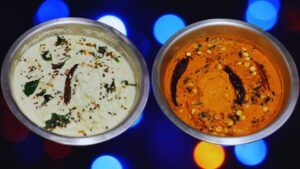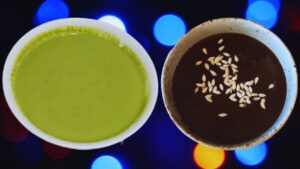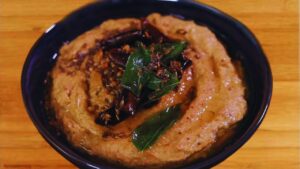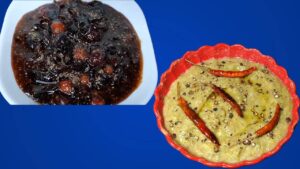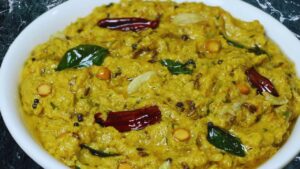Curry leaves chutney is a useful condiment. It is made from fresh curry leaves. These leaves are ground after boiling and then tempered with cumin seeds, asafetida, and other aromatic spices. My simple recipe will walk you through the crucial steps to make curry leaves chutney at home.
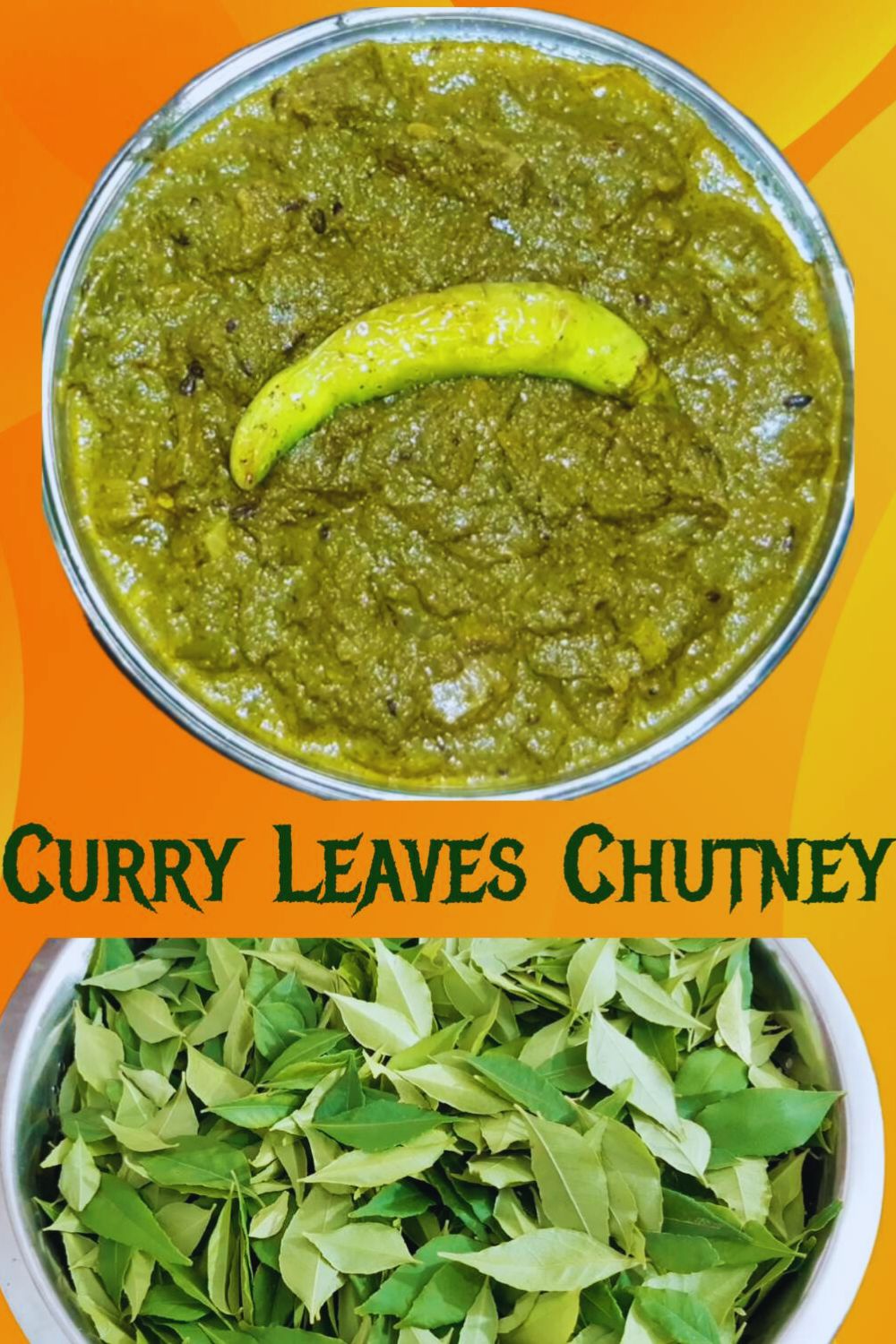
KEY TAKEAWAYS
- Curry leaves chutney is found in most South Indian kitchens.
- Store the chutney in an airtight container. Keep it in your fridge. Always use a clean and dry spoon while serving to prevent contamination.
- Serve the chutney with idli, dosa, pongal, upma, vada, pakoras, samosa, bhajis, curries, rice dishes, Indian bread, and more.
- Curry leaves chutney typically offers a spicy and earthy taste with a hint of saltiness, and tanginess. It also renders a savory and umami feeling.
- Coriander-cumin chutney and mint-coriander chutney offer a somewhat similar taste as curry leaves chutney.
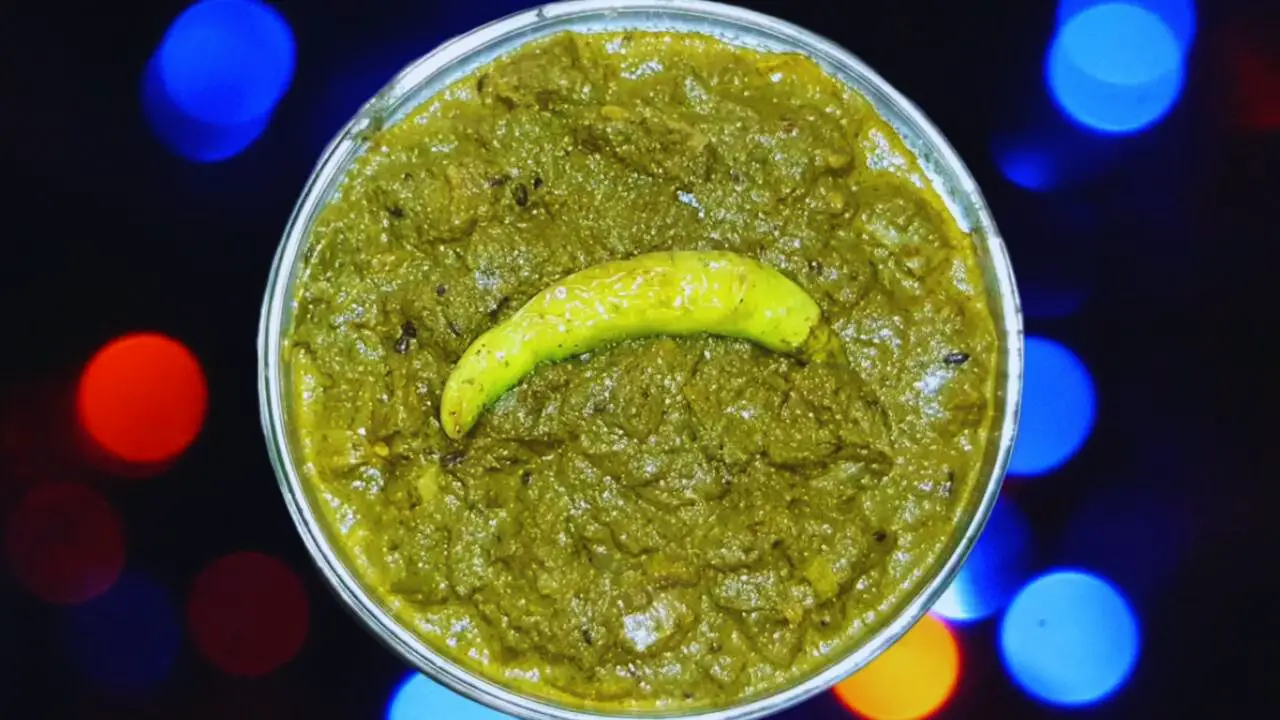
This chutney recipe came from a woman who teaches embroidery at the community center. During a stitching session, she opened her dabba and offered me a bit of the chutney she brought in her tiffin. It was warm and filling. I asked how she prepared it, and she gave me a detailed description while finishing her threadwork.
I tried it that evening. My husband said it had layers, and the boys called it “stitched with flavor.” Now, it is our handcraft meal. That experience reminded me that detailed work, whether in thread or in food, is all about patience—and women like her excel at both.
How to Cook Curry Leaves Chutney? (Step by Step Guide with Images)
Step 1: Take any cooking pot (a stainless-steel pot is a good choice) and half-fill it with water.
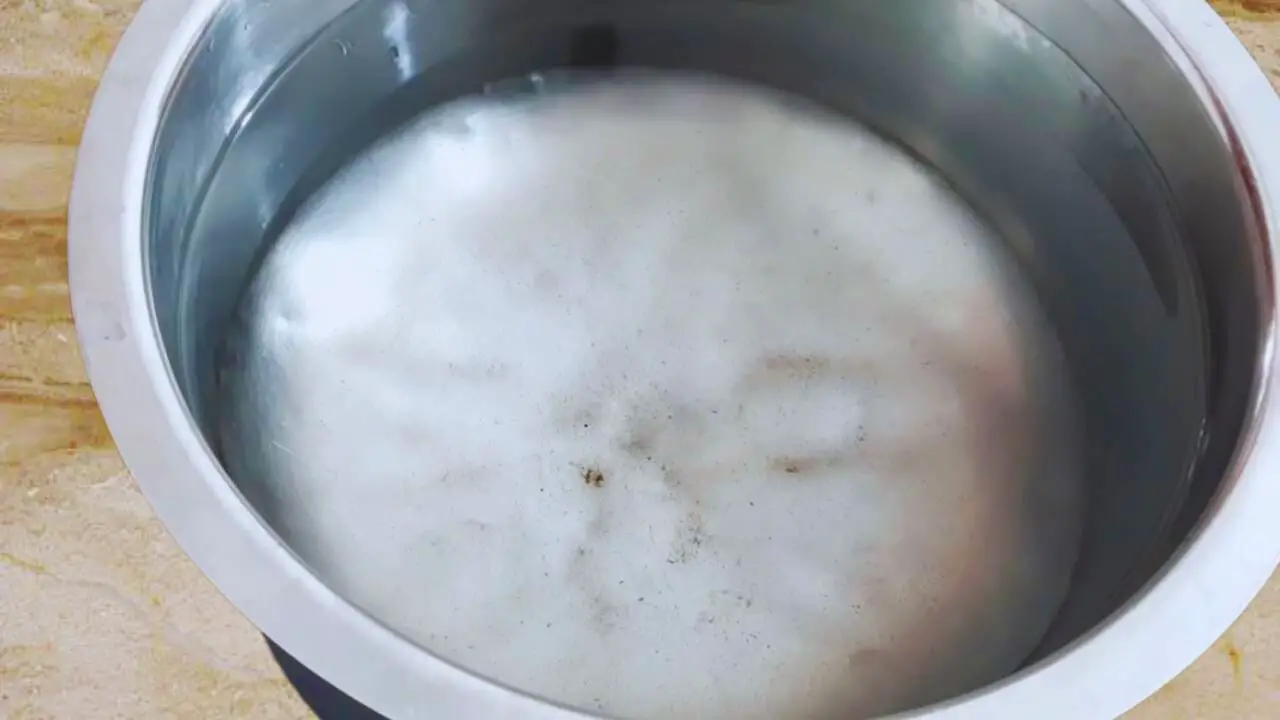
Step 2: Add ½ tsp of salt to the water and heat it on your gas stove. You may cover it.
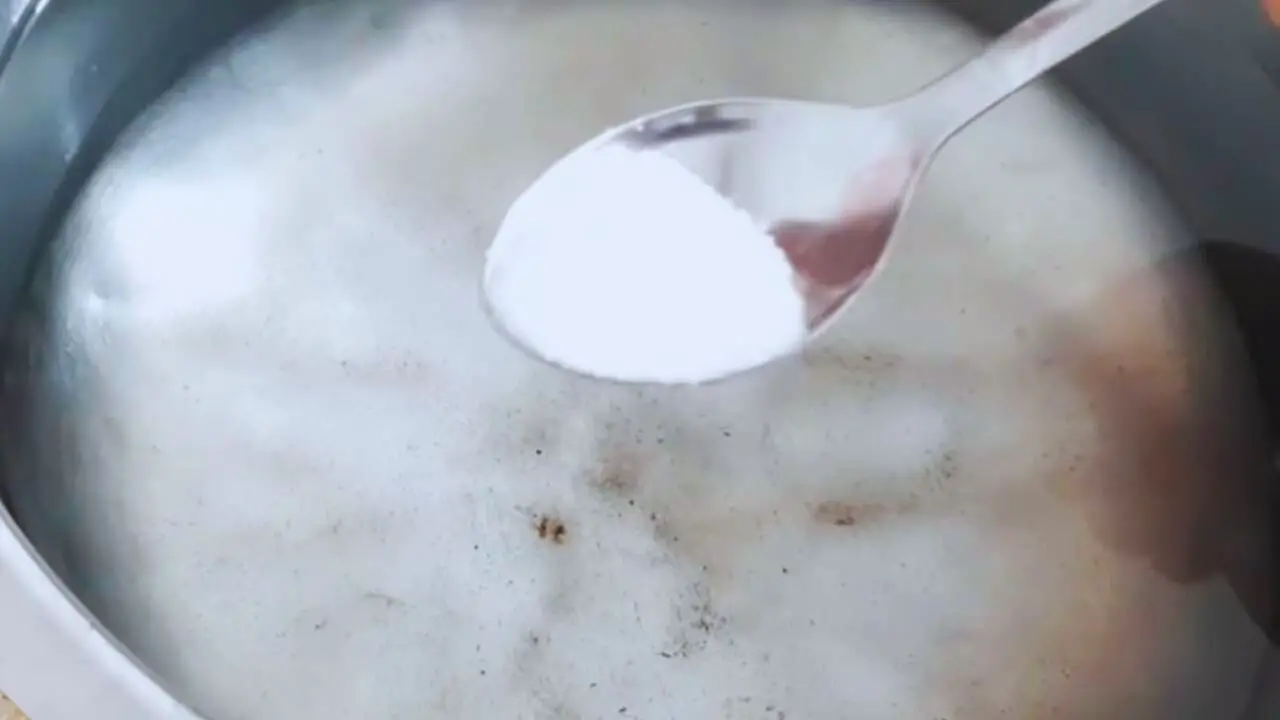
Step 3: Add 1 large bowl of fresh curry leaves when the water is hot enough.
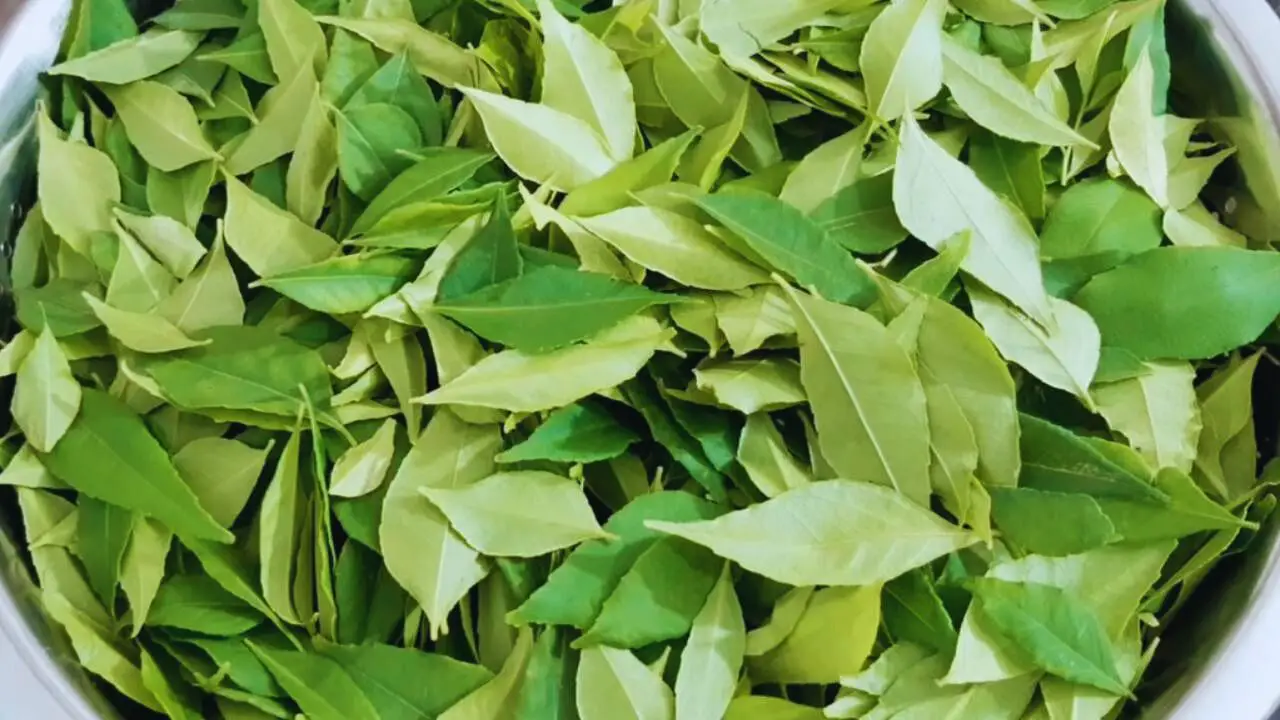
Step 4: Stir it to soak all of the curry leaves nicely.
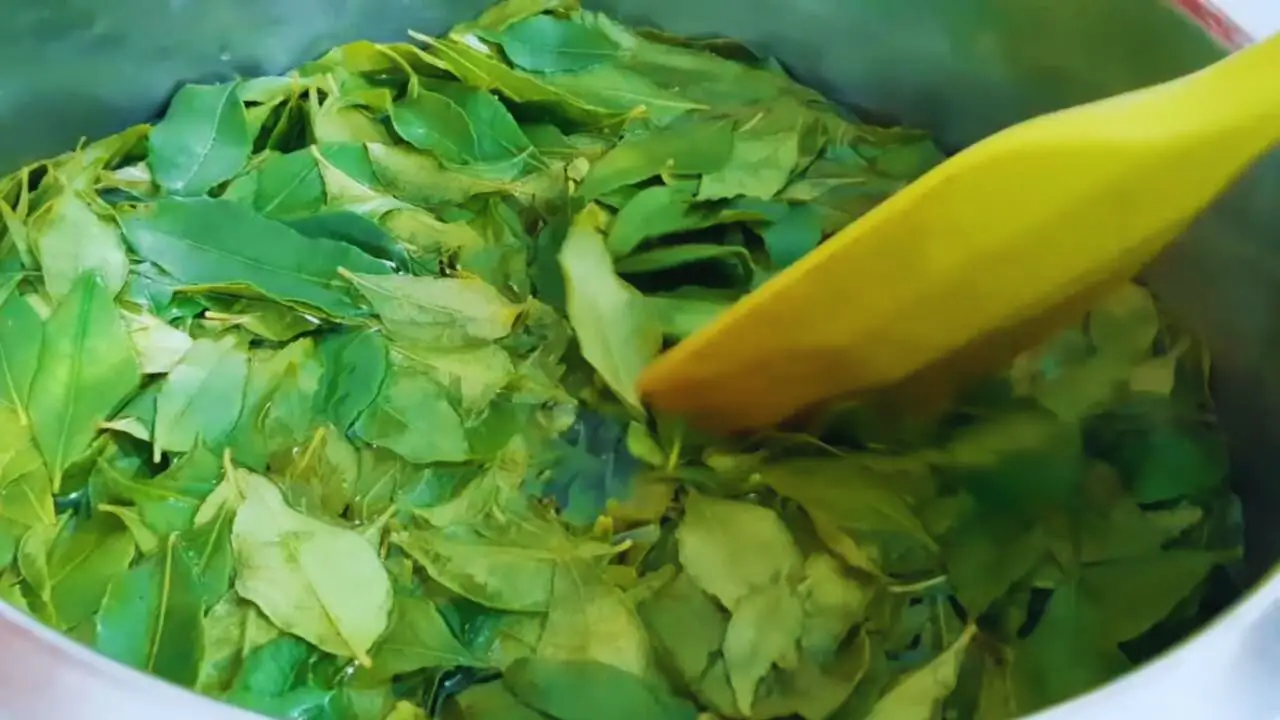
Step 5: Cover it and let it cook for 2 to 3 minutes until the water comes to a boil and the leaves soften.
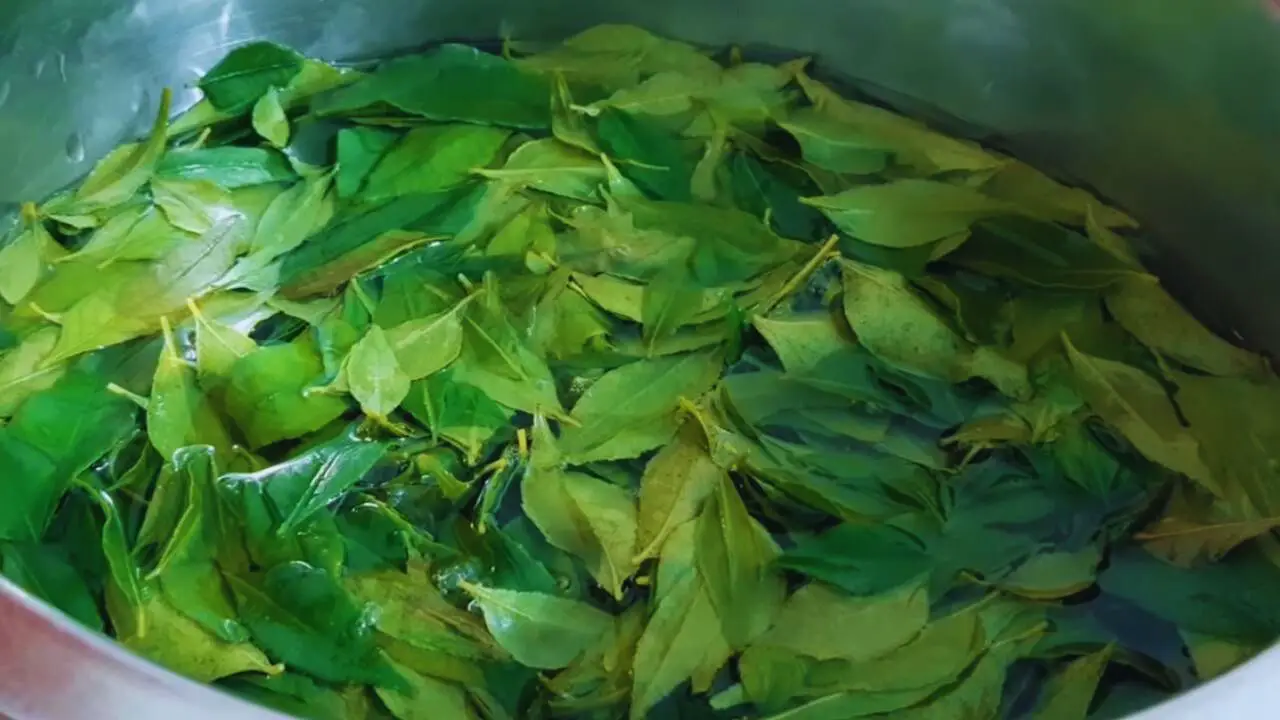
Step 6: Check the softness of the leaves.
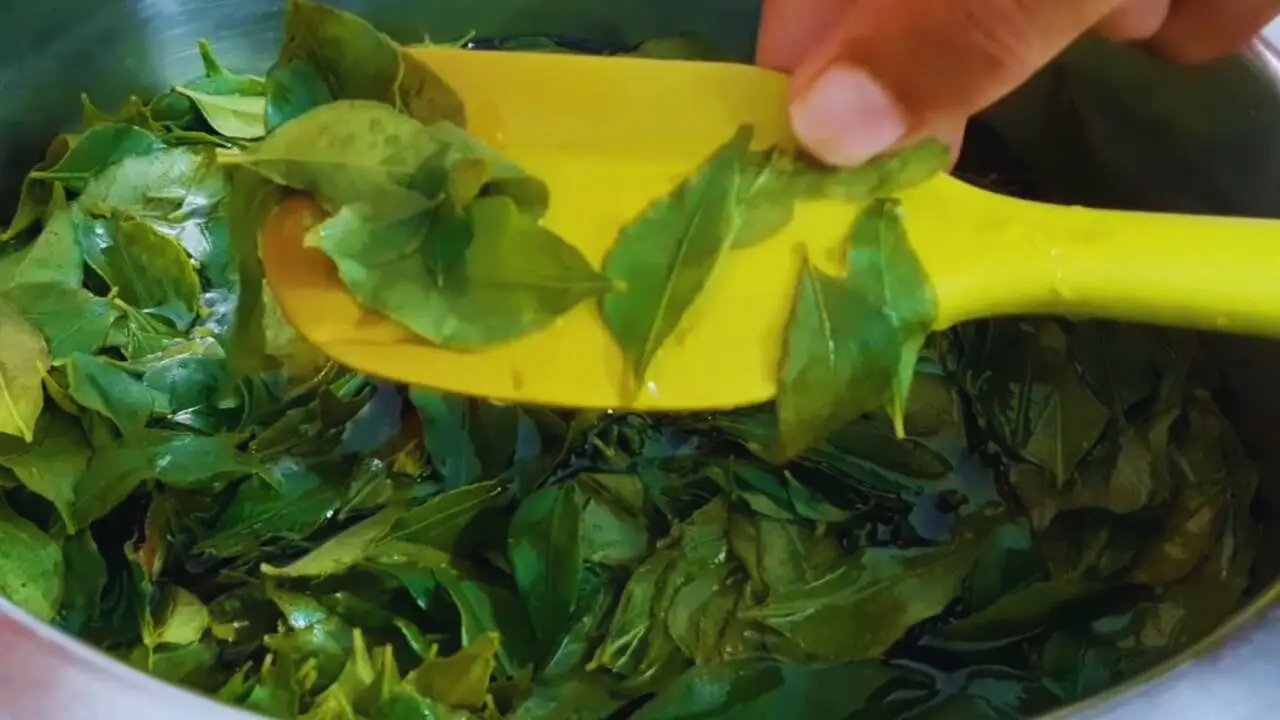
Step 7: Cook it for some more time till the leaves lose their fresh green color. Turn the flame of your gas stove off. Strain the water to separate the curry leaves. Set it aside to cool down.
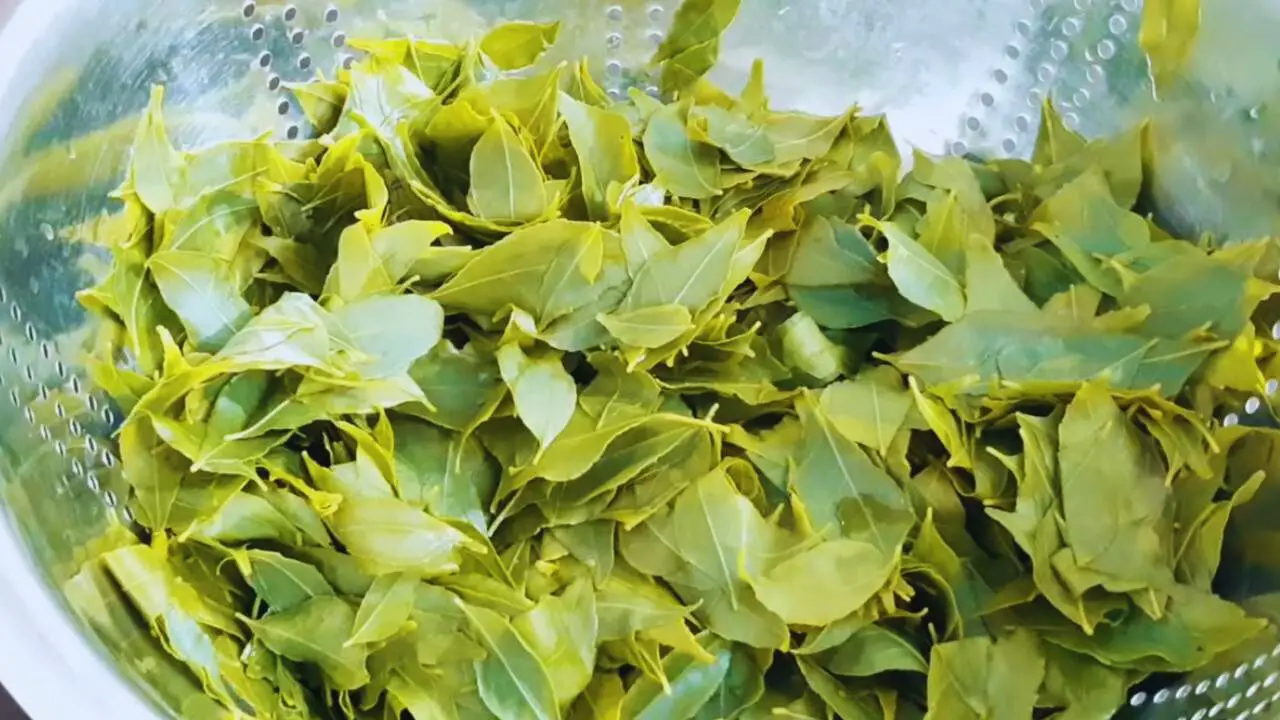
Step 8: When the leaves are cool enough, take a clean grinder.
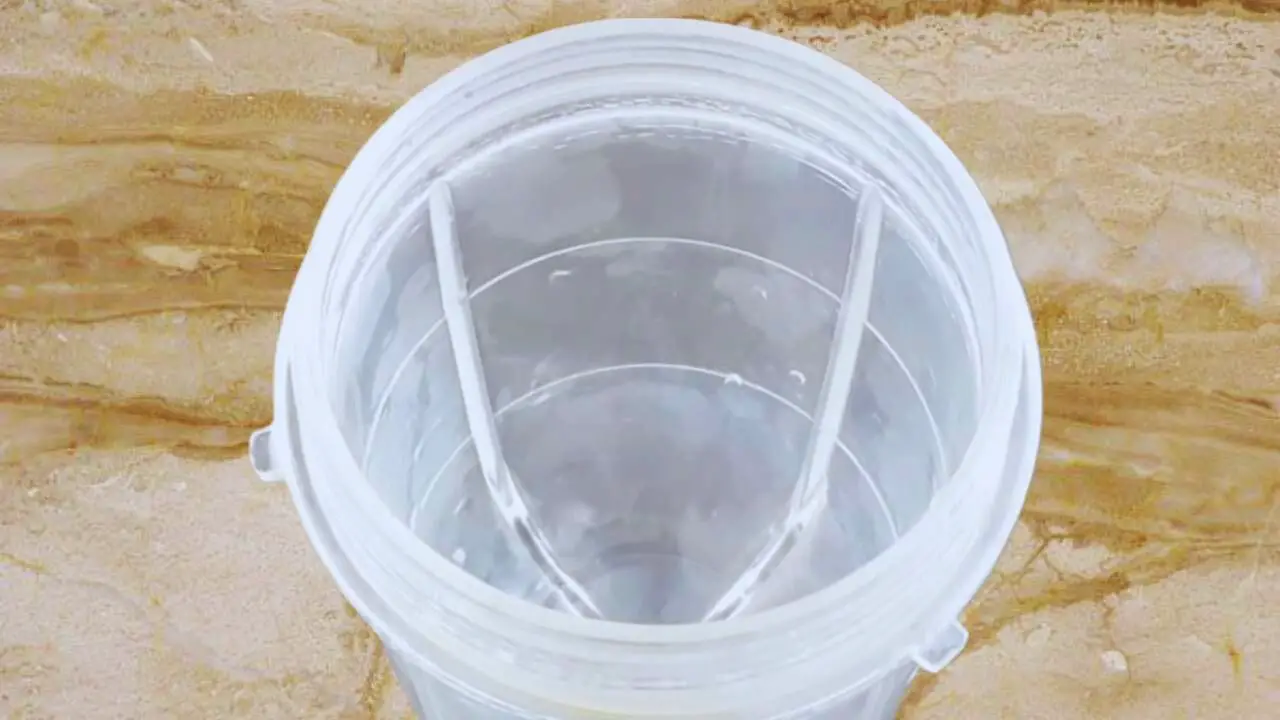
(Pro tip: You can use a grinding stone (sil batta) or mortar & pestle set (haman dista) for a better taste, but that will need some effort in grinding the leaves. I prefer using a grinder).
Step 9: Add the soaked curry leaves into the grinder.
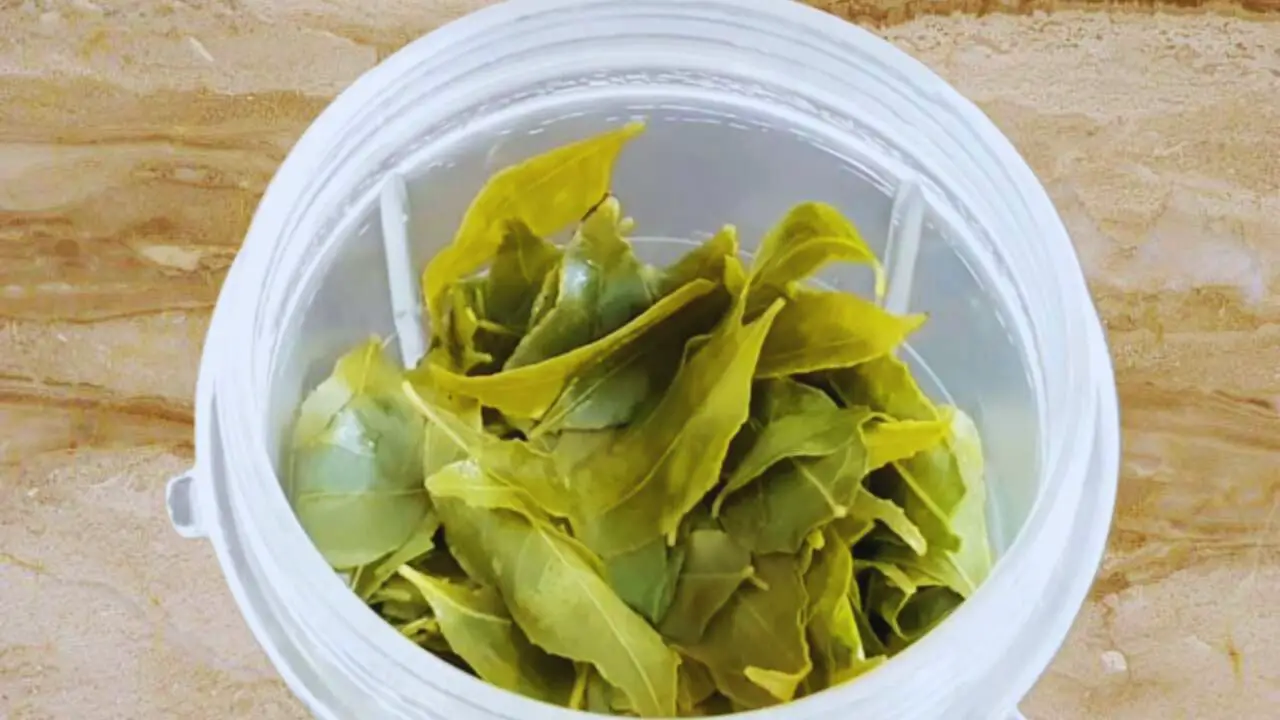
Step 10: Grind the leaves to get a fine paste.
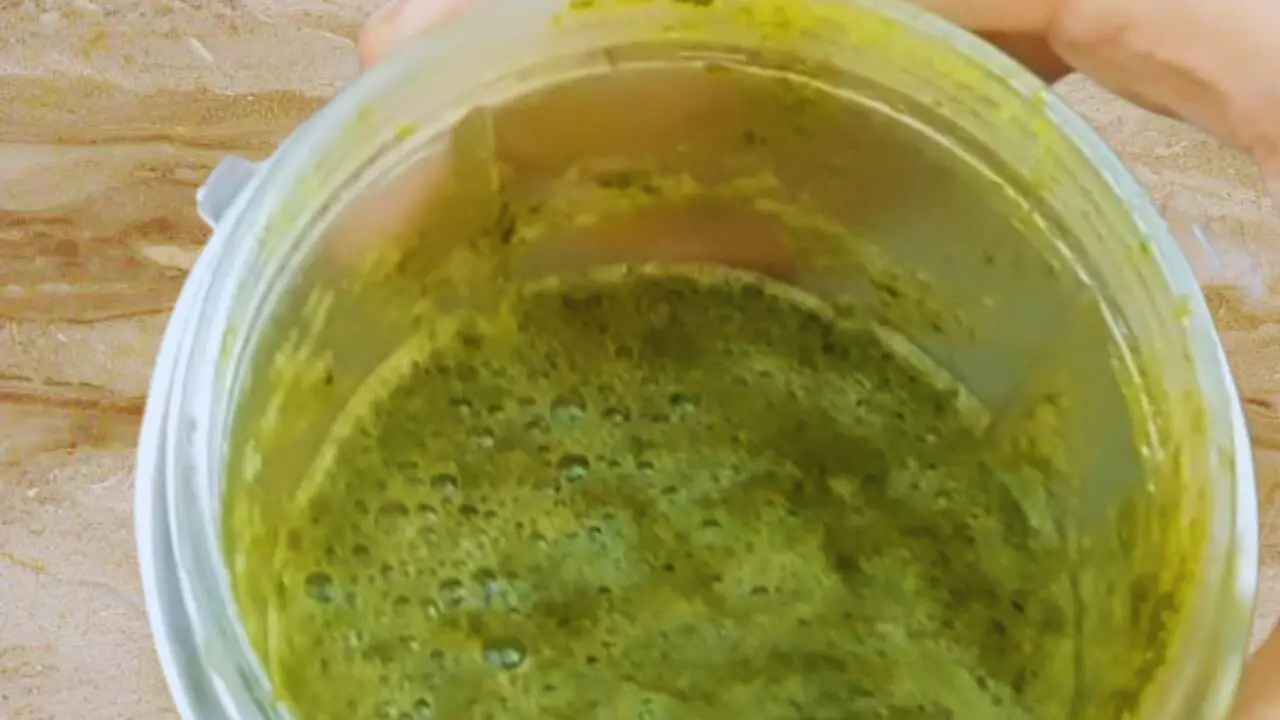
(Pro tip: You may use a spoonful or two of the strained water if you want to liquify the paste, as I have).
Step 11: Take a clean bowl.
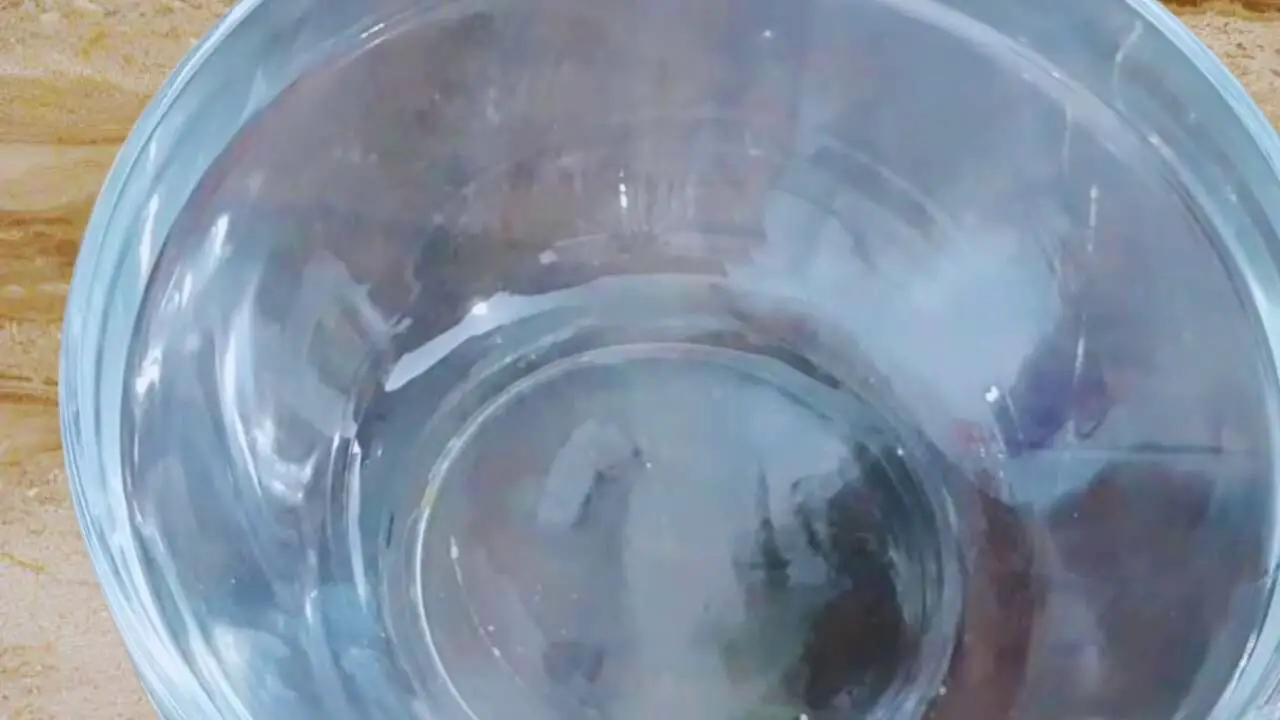
Step 12: Pour the paste into it. Keep it aside.
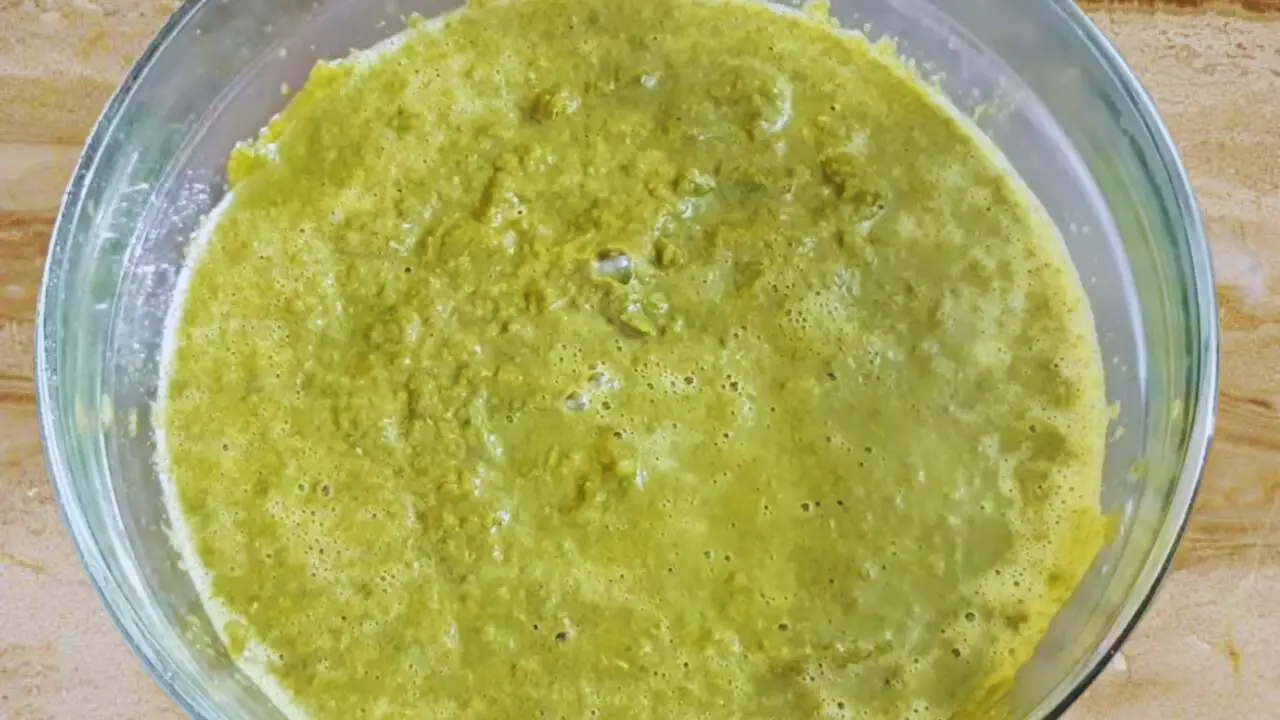
Step 13: Now, for tempering the curry leaves chutney, take a frying pan or wok, put about 5 tbsp of white oil in it, and heat it on a medium flame on your gas stove.
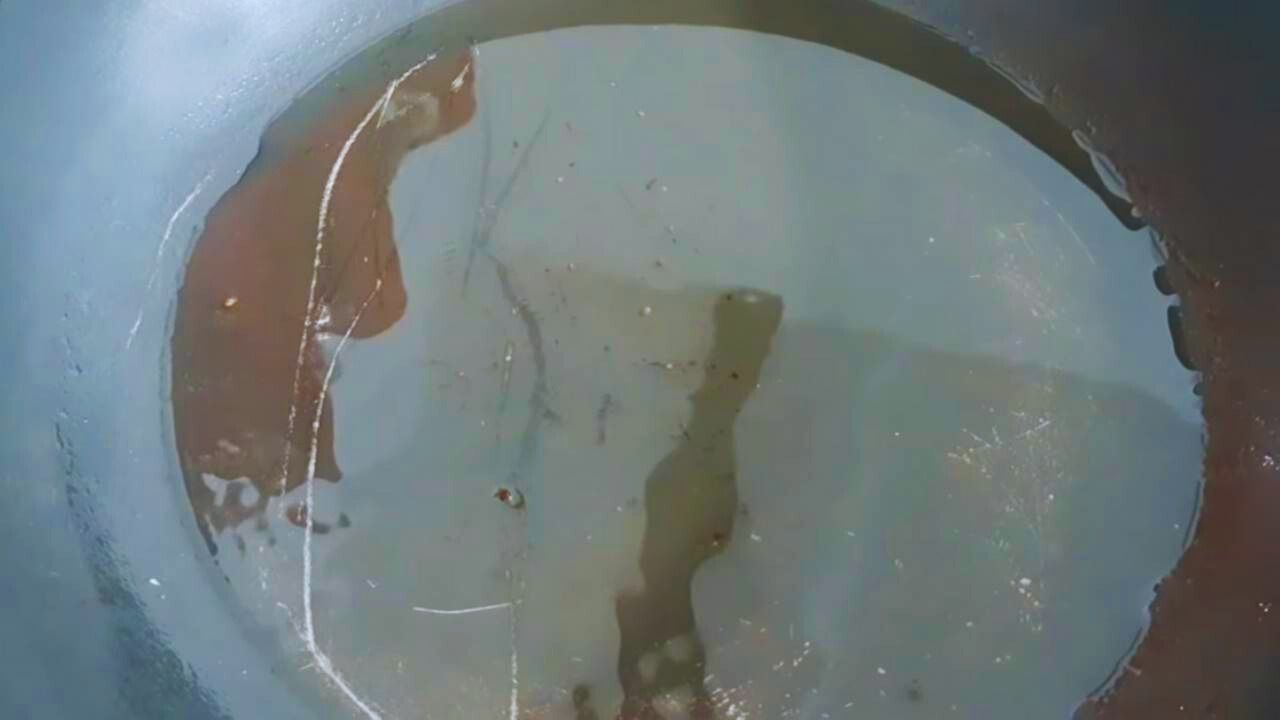
Step 14: When it is hot, add 1 tsp of cumin seeds in it. Let it crackle and change color.
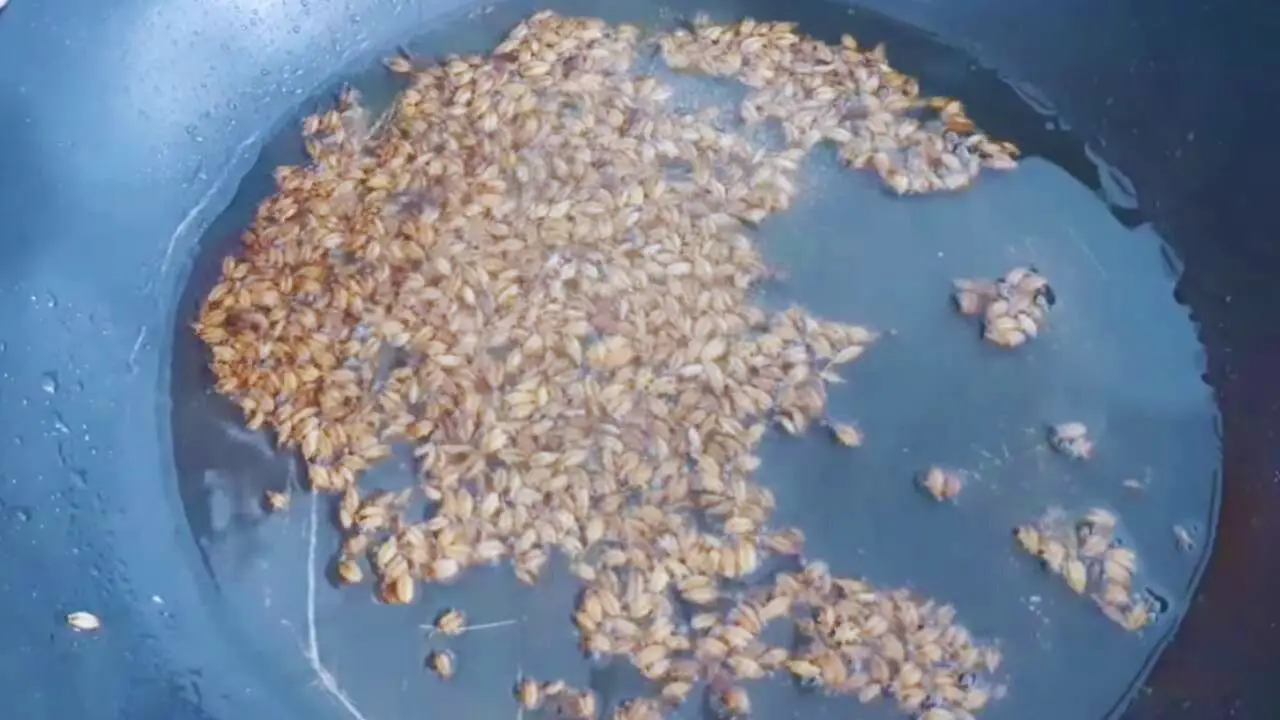
Step 15: When it does, add ¼ tsp of asafetida in it.

Step 16: After a short while, add 2 finely chopped green chilies in it.
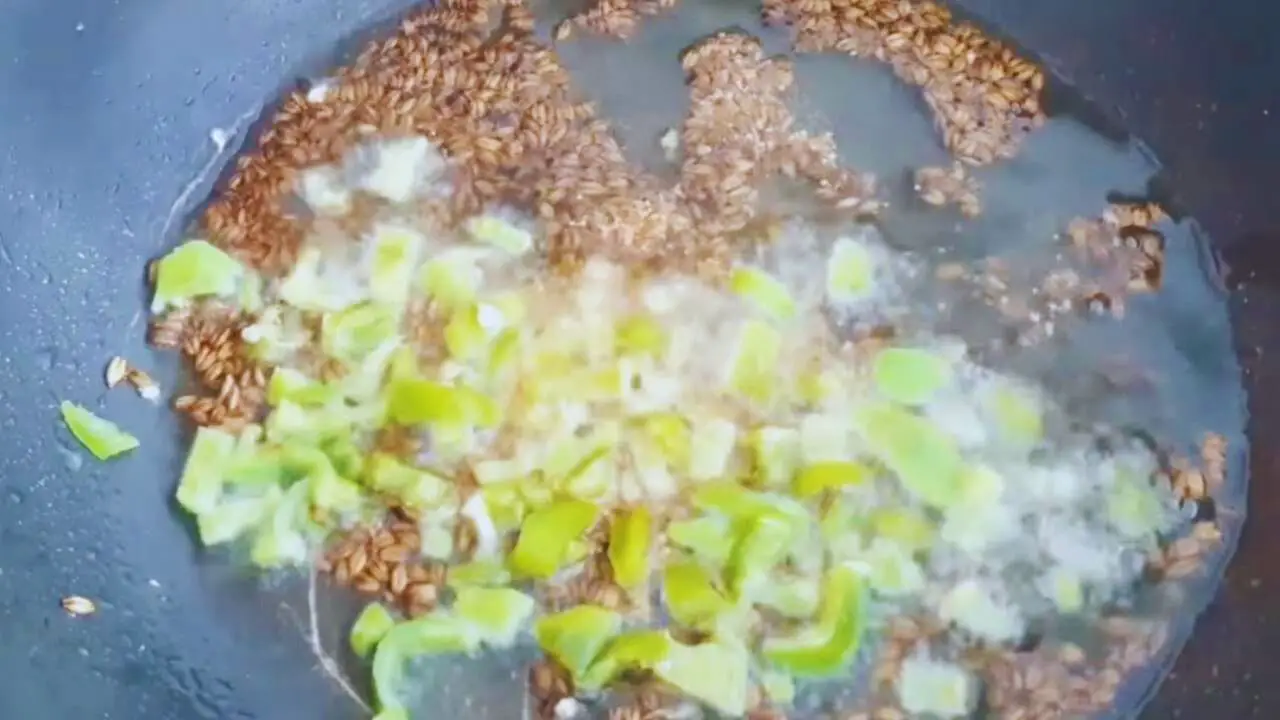
Step 17: Then add 1 tsp of ginger-garlic paste to the content.

Step 18: Finally, add two medium pieces of onions, roughly chopped, to the content.
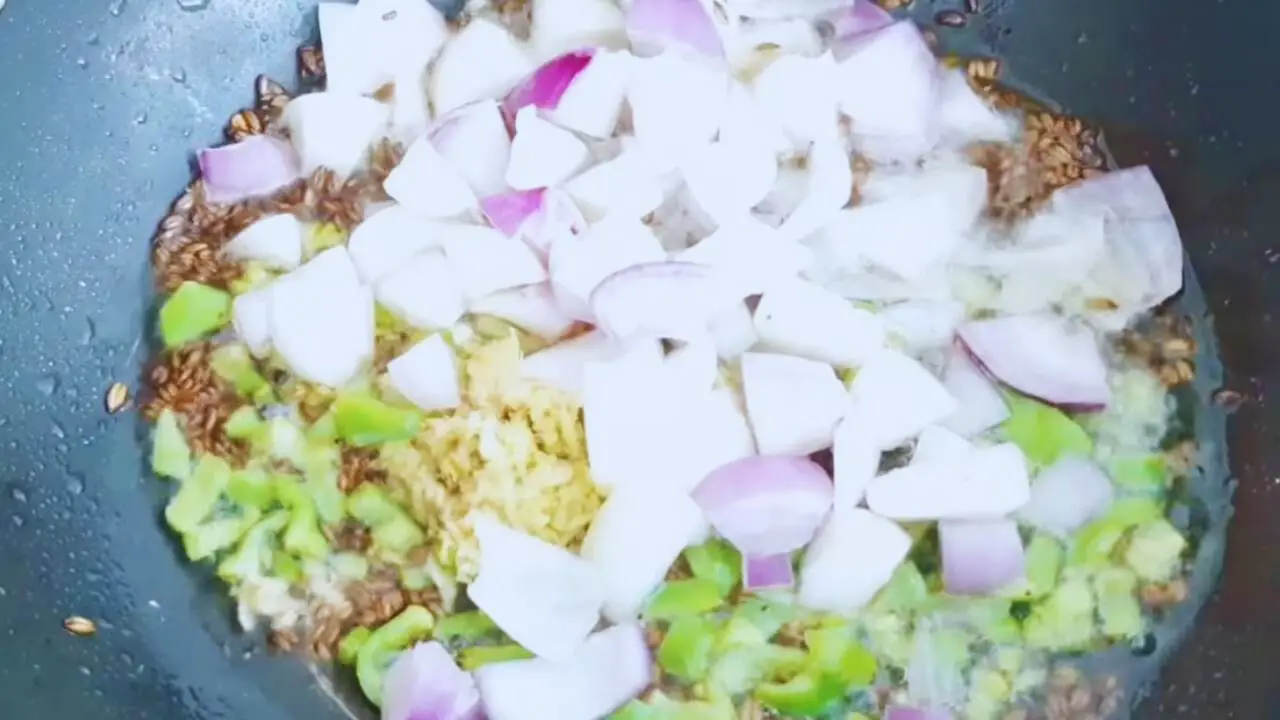
Step 19: Sauté the ingredients for a minute or two until the onions turn translucent.
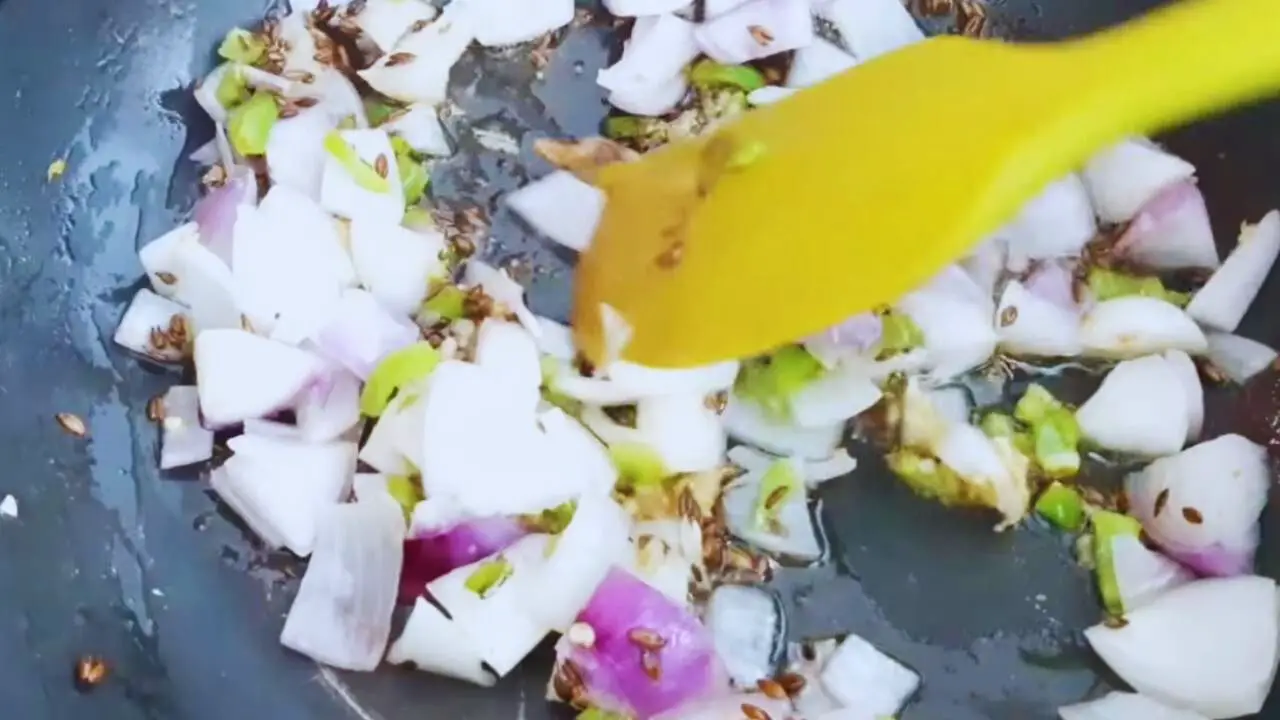
(Pro tip: You may cover it but make sure that you keep checking it continuously to prevent overcooking. Do not overcook them as that will reduce the taste and flavor of the curry leaves chutney).
Step 20: When the onions just start to turn light brown, add ½ tsp of table salt and ½ tsp of red chili powder to the ingredients.

(Pro tip: You can alter the quantity of salt and red chili powder according to your taste and preference).
Step 21: Then add ½ a tsp of turmeric powder to it.

Step 22: Mix everything well and stir them for about a minute or two more so that these are nicely cooked.
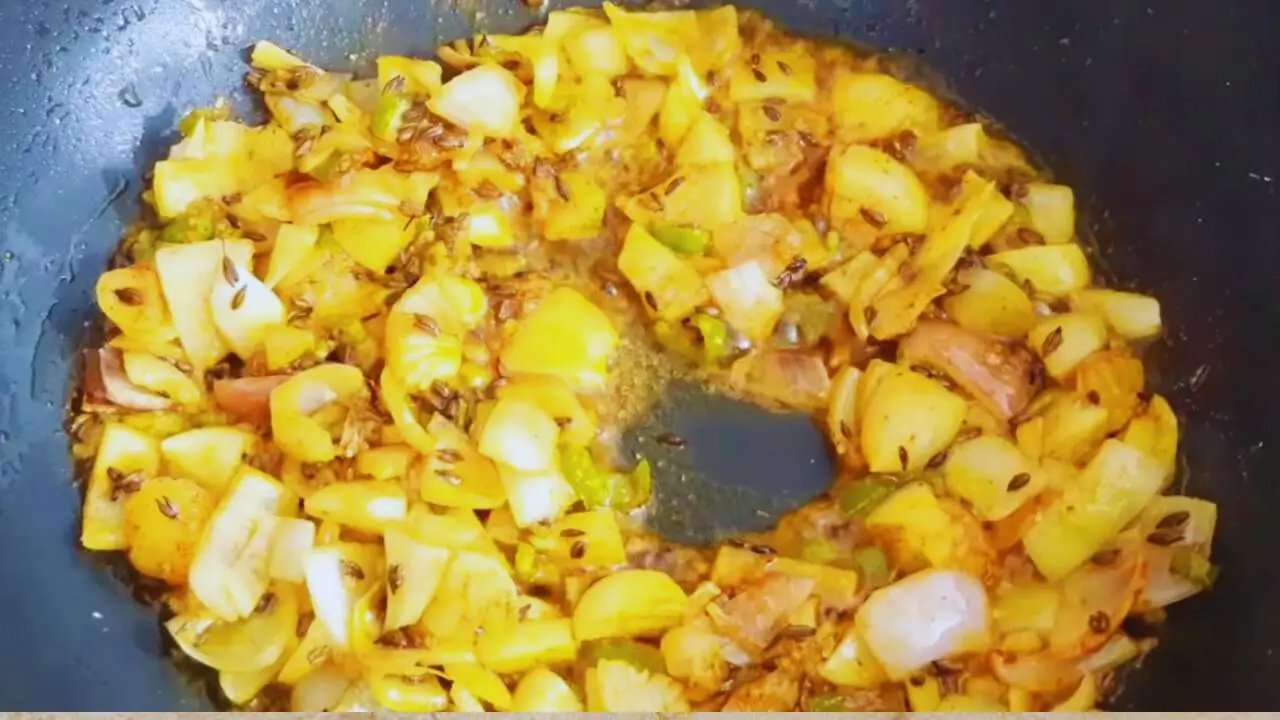
Step 23: Cover it for faster cooking. This will also lower the chances of burning the ingredients as covering the wok will create vapors. However, that does not mean you do not need to check the masala intermittently.
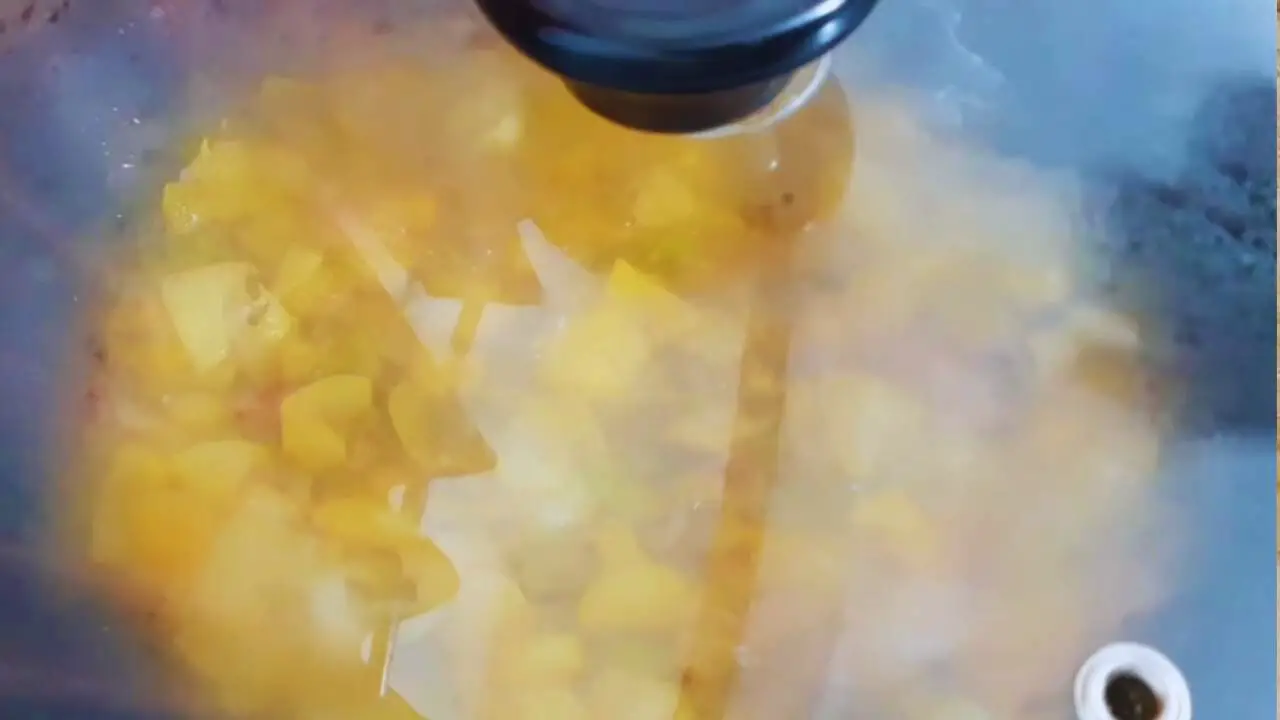
Step 24: When the ingredients are cooked nicely, it will release oil from the sides.
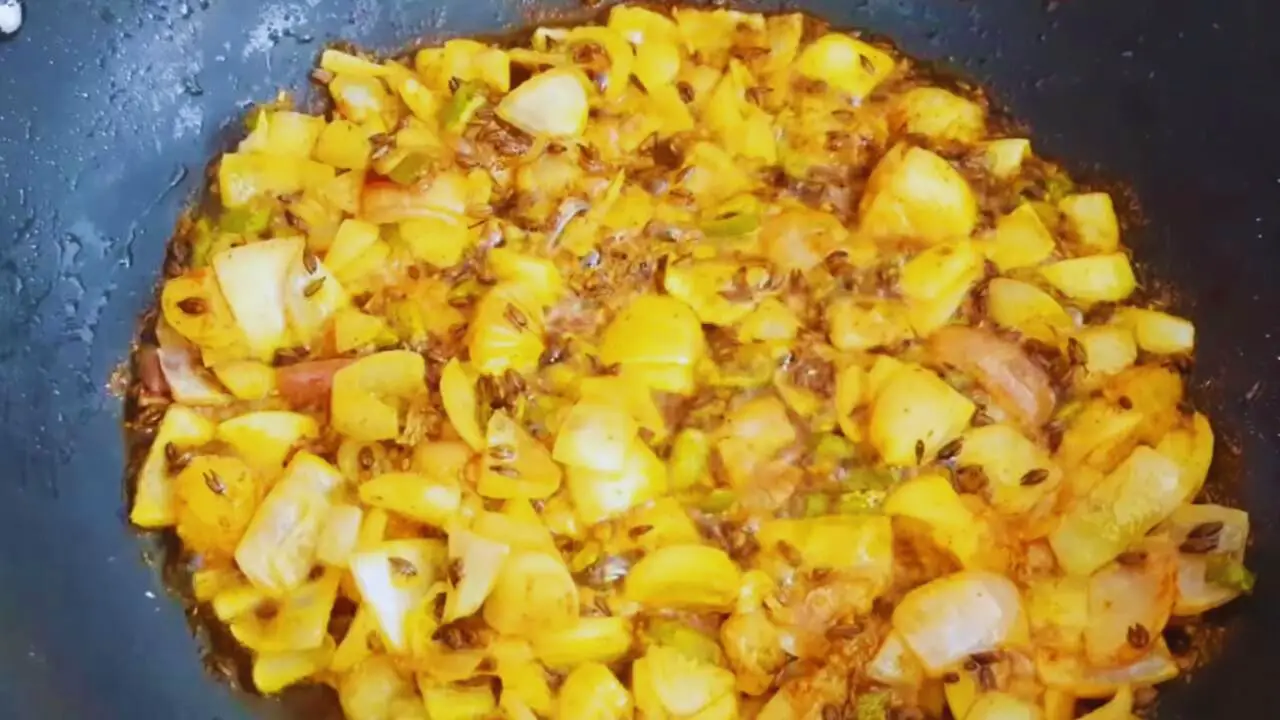
Step 25: When you notice it, pour the curry leaves paste that you kept aside.
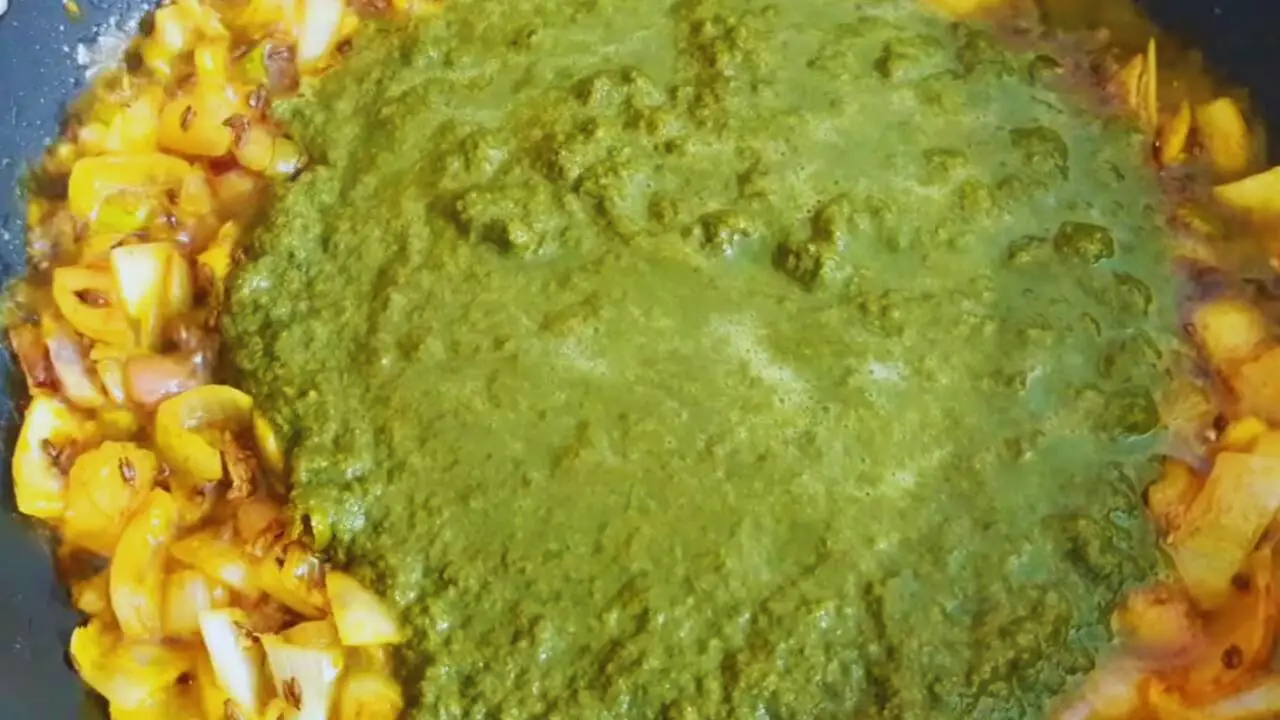
Step 26: Mix them well.
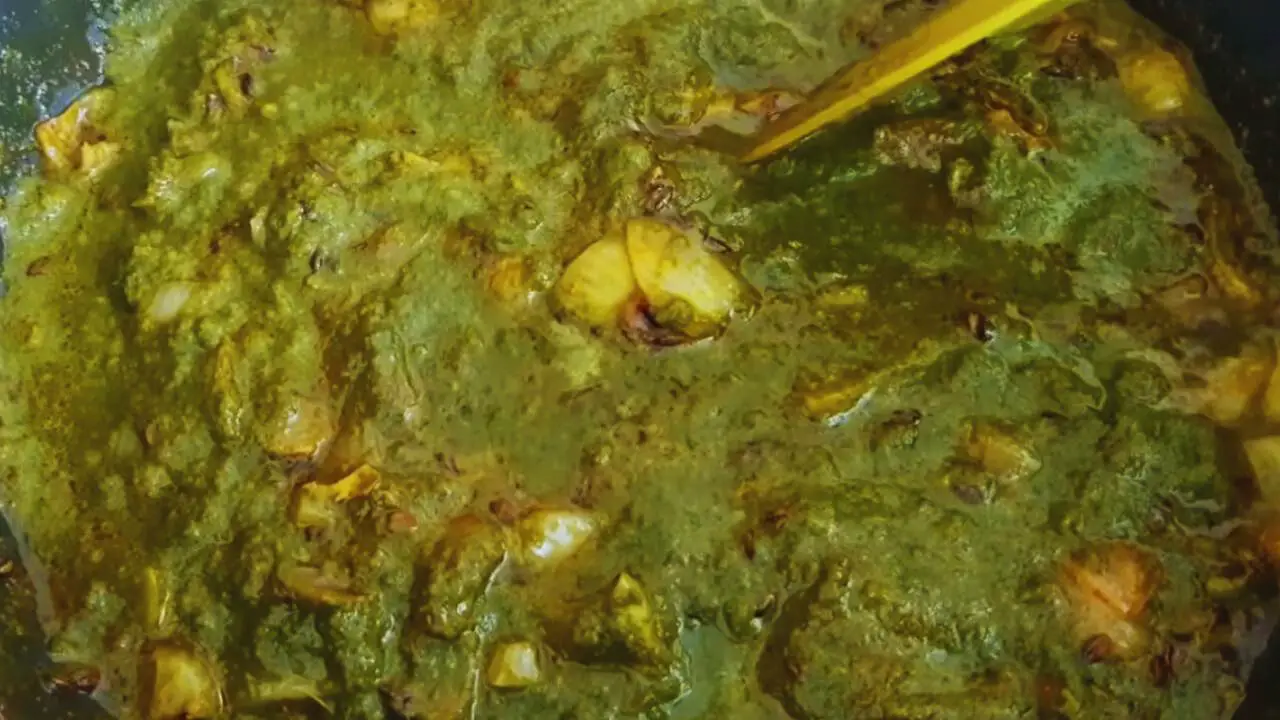
Step 27: Cover the content and let it cook for another 2 to 3 minutes. Check whether it has come to a boil.
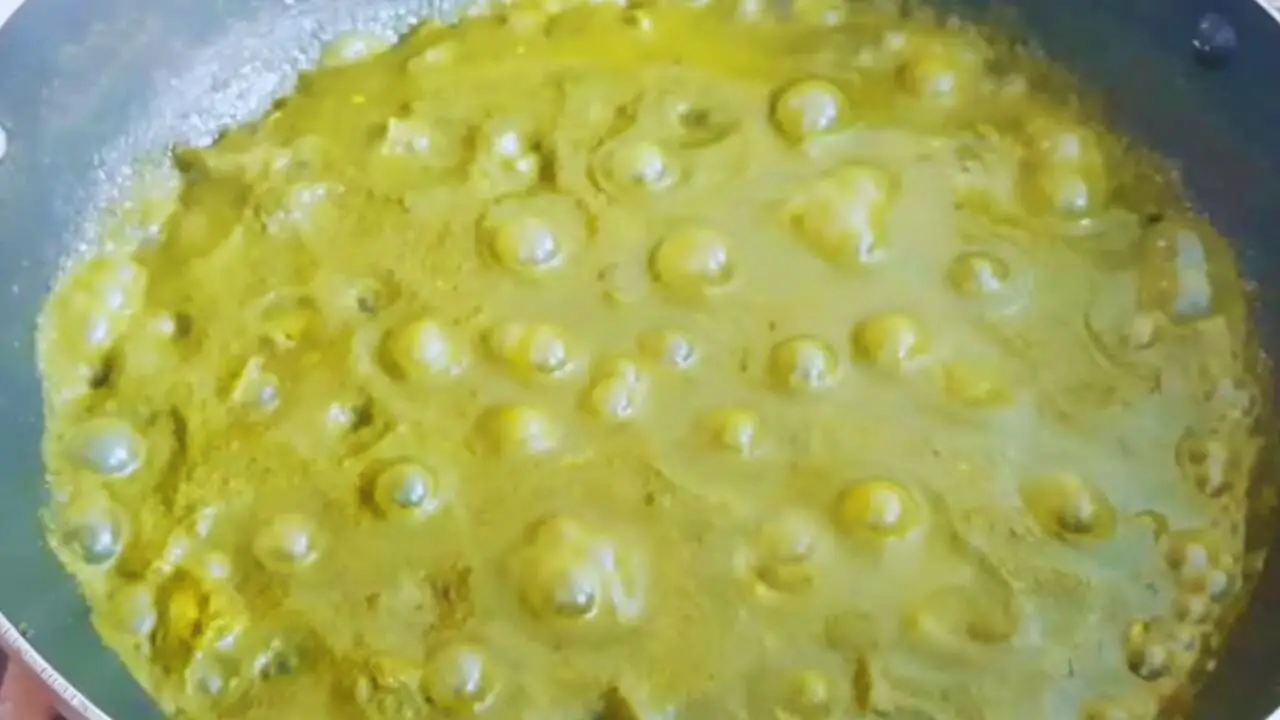
Step 28: Give it a final stir.
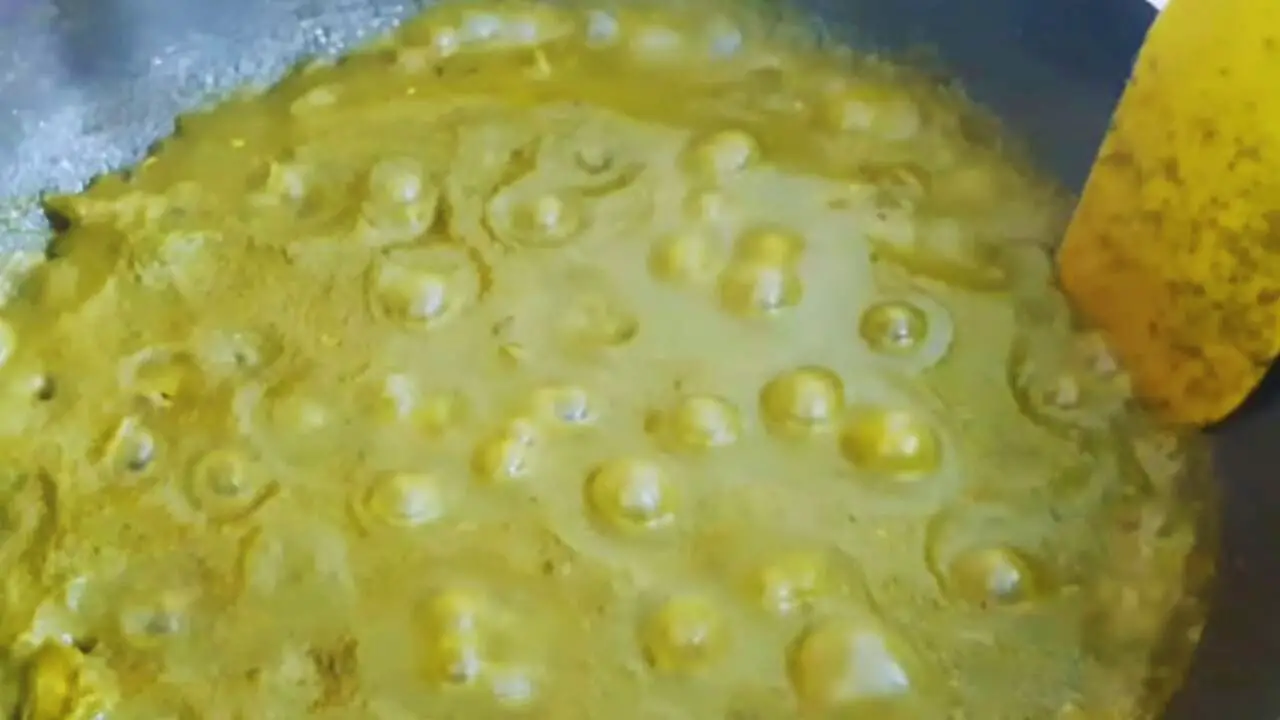
Step 29: Check the consistency.
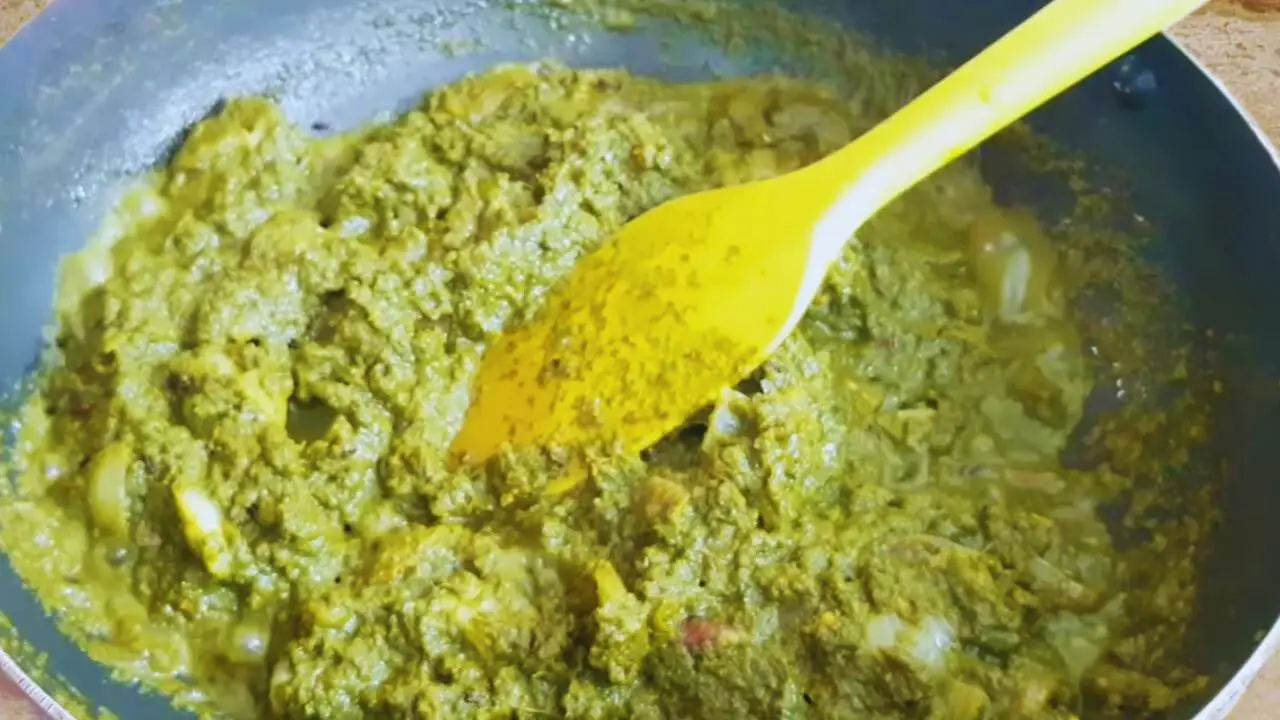
(Pro tip: You may add a spoonful of water if you do not want a thick consistency. But make sure that you let the water boil for some time to remove its bland taste).
Step 30: Transfer the content into a bowl and your tasty curry leaves chutney is ready to serve with a variety of snacks and dishes.
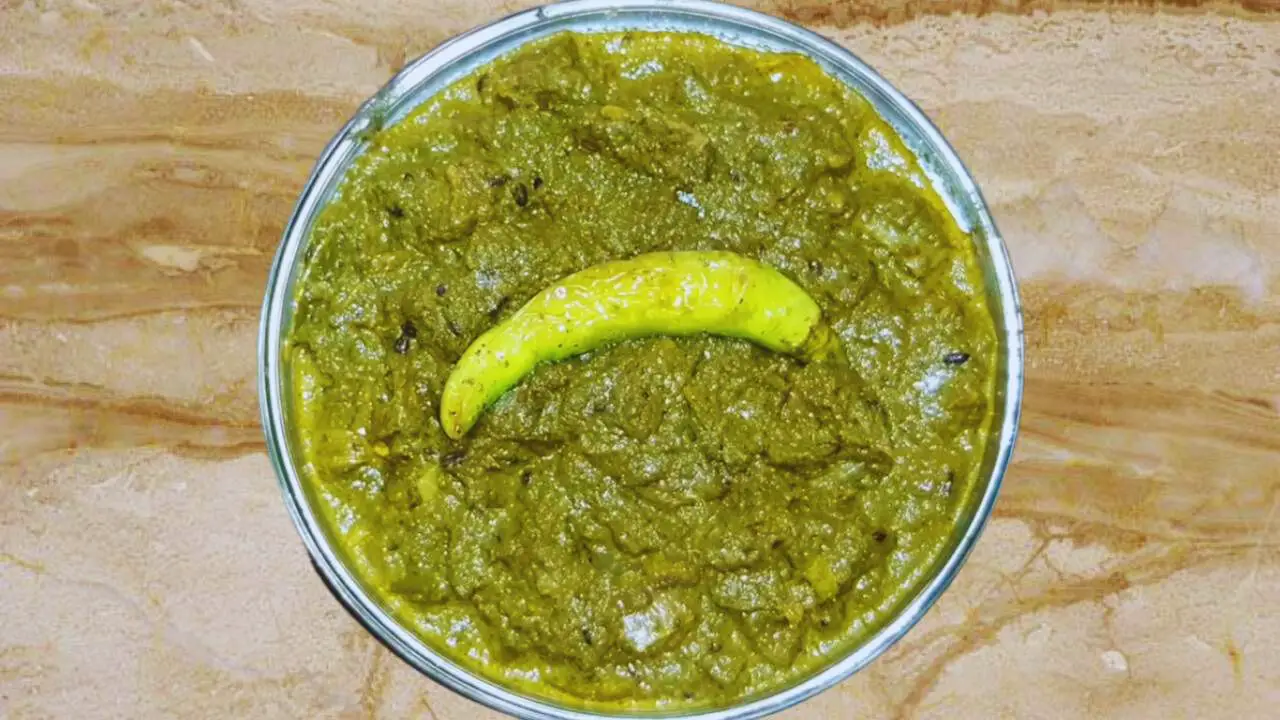
Recipe Card
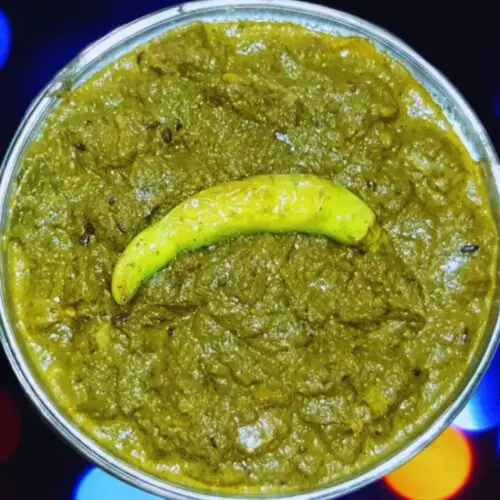
Curry Leaves Chutney
Ingredients
- 1 bowl Curry leaves large
- ½ tsp Tables salt
- 1 liter Water
For Tempering
- 5 tbsp White oil
- 1 tsp Cumin seeds
- ¼ tsp Asafetida
- 1 tsp Ginger garlic paste
- 2 pieces Onion medium size (roughly chopped)
- 2 pieces Fresh green chilies (finely chopped)
- ½ tsp Table salt
- ½ tsp Red chili powder
- ½ tsp Turmeric powder
Instructions
- Take any cooking pot (a stainless-steel pot is a good choice) and half-fill it with water.
- Add ½ tsp of salt to the water and heat it on your gas stove. You may cover it.
- Add 1 large bowl of fresh curry leaves when the water is hot enough.
- Stir it to soak all of the curry leaves nicely.
- Cover it and let it cook for 2 to 3 minutes until the water comes to a boil and the leaves soften.
- Check the softness of the leaves.
- Cook it for some more time till the leaves lose their fresh green color. Turn the flame of your gas stove off. Strain the water to separate the curry leaves. Set it aside to cool down.
- When the leaves are cool enough, take a clean grinder. (Pro tip: You can use a grinding stone (sil batta) or mortar & pestle set (haman dista) for a better taste, but that will need some effort in grinding the leaves. I prefer using a grinder).
- Add the soaked curry leaves into the grinder.
- Grind the leaves to get a fine paste. (Pro tip: You may use a spoonful or two of the strained water if you want to liquify the paste, as I have).
- Take a clean bowl.
- Pour the paste into it. Keep it aside.
- Now, for tempering the curry leaves chutney, take a frying pan or wok, put about 5 tbsp of white oil in it, and heat it on a medium flame on your gas stove.
- When it is hot, add 1 tsp of cumin seeds in it. Let it crackle and change color.
- When it does, add ¼ tsp of asafetida in it.
- After a short while, add 2 finely chopped green chilies in it.
- Then add 1 tsp of ginger-garlic paste to the content.
- Finally, add two medium pieces of onions, roughly chopped, to the content.
- Sauté the ingredients for a minute or two until the onions turn translucent. (Pro tip: You may cover it but make sure that you keep checking it continuously to prevent overcooking. Do not overcook them as that will reduce the taste and flavor of the curry leaves chutney).
- When the onions just start to turn light brown, add ½ tsp of table salt and ½ tsp of red chili powder to the ingredients. (Pro tip: You can alter the quantity of salt and red chili powder according to your taste and preference).
- Then add ½ a tsp of turmeric powder to it.
- Mix everything well and stir them for about a minute or two more so that these are nicely cooked.
- Cover it for faster cooking. This will also lower the chances of burning the ingredients as covering the wok will create vapors. However, that does not mean you do not need to check the masala intermittently.
- When the ingredients are cooked nicely, it will release oil from the sides.
- When you notice it, pour the curry leaves paste that you kept aside.
- Mix them well.
- Cover the content and let it cook for another 2 to 3 minutes. Check whether it has come to a boil.
- Give it a final stir.
- Check the consistency. (Pro tip: You may add a spoonful of water if you do not want a thick consistency. But make sure that you let the water boil for some time to remove its bland taste).
- Transfer the content into a bowl and your tasty curry leaves chutney is ready to serve with a variety of snacks and dishes.
Notes
Nutrition Info (Estimation Only)

